HorseRacingUSA.com
![]()
Thoroughbred Racing:
Handicapping With WATT
Case Studies
![]()
(Remember to hit "Refresh" Often)
![]()
We are pleased to offer these case studies for Winning at the Track handicappers, whether they are using their newly-purchased WATT program or the free Internet Version that is available elsewhere on this website.
With this guide you will discover many applications for this speed/pace program as well as numerous methods for handicapping thoroughbreds - with or without the computer.
When you download each sample file, run it in your program just as you would on any normal day of handicapping. Apply the "Handicap Analysis" offered here and then be watching for similar situations in the future. Over time, you will develop a profitable library of winning techniques for handicapping the horses.
![]()
![]()
Wavering Marci (#4) paid $19 to romp in this
6f race for 3YO fillies !
Best of all, it was EASY for WATT users to see ! ...
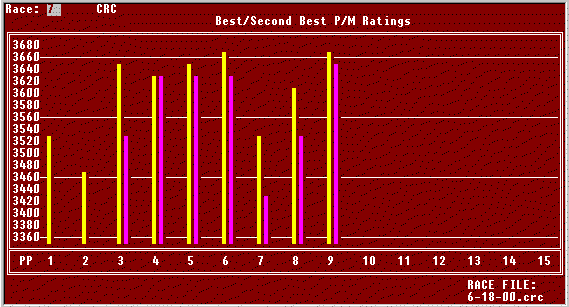
The Handicap
Author D.L. Christopher calls this play the "Former Green Baby"... and WATT users can identify them quickly and easily. In this case, Wavering Marci, #4, had P/M figures that were comparable to four or five other fillies in this contest. So, why should she win today? Answer: Because her numbers were established last year when she was a 2-year-old!
WATT users can read more about this easy-to-see, money-making opportunity on page 58 of Christopher's second book, "Handicap! Finding the Key Horse" (an inexpensive $12.95 paperback, available from LPC).
![]()
![]()
Learn why DRAMA CRITIC (pp #8) was a "sure winner" in this turf contest!
Screen Four of the Graphics Module only gave us a "hint"...
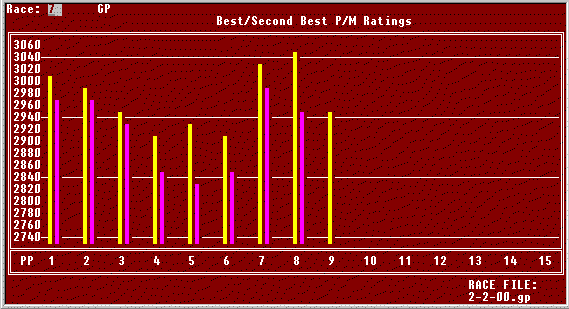
The Handicap
This was the 7th at Gulfstream, a 1 1/8 mile turf race, on Feb 2. Drama Critic, #8, was the only one in this field that had never run on the grass. As a general rule, horses that run well on the dirt usually improve on the turf (but, beware, it's NOT true the other way around). Thus, the solid performance illustrated above might actually be conservative.
As a general rule, speed/pace computer
handicappers are usually not impressed by "class" when it comes to selecting
winners. However, experienced racegoers also realize that class has added
significance on the turf, as opposed to the dirt. WATT users are advised to always
check the Key Horse Statistics screen when handicapping turf races. Here is what the
screen showed...
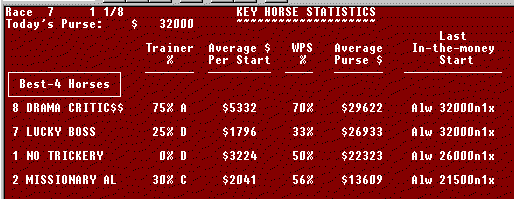
It's fair to say that Drama Critic was not "over his head" in this
contest! The "A" rating assigned to the jockey/trainer combination is an
added "plus" in the handicap. Unfortunately, Drama Critic went off as the
post-time favorite and paid only $4.20 to win. But, as this analysis illustrates,
the risk of LOSING appeared to be relatively low. Betting to WIN was done with great
confidence.
![]()
![]()
Here, NEALSKI'S BRO (pp #2) was the key to an easy $350.80 trifecta ...
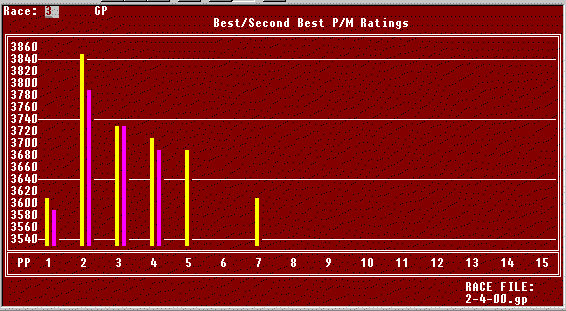
The Handicap
This trifecta was a "gimme." The 3rd at Gulfstream on Feb 4 was a 6 furlong Maiden Special Weight for 4YO colts with one first-time starter. #2 Nealski's Bro appeared to be in form with a good jockey aboard - and clearly superior to all the others with the possible exception of one, the first timer, #6 Shoe Notes (morning line 15:1). Nealski's Bro was flashing at 5:2 and was closer to 2:1 as post time approached. He was selected as our "key." Shoe Notes was by the very speedy Glitterman and his two recent 5 furlong workouts suggested he could definitely be a contender despite his poor action on the board.
As every experienced racegoer knows, ANY horse can finish third. So, when playing trifectas, it pays to be generous with the third place slot. There were three other horses that appeared capable including #3, Cinnamon Lad, who, like Nealski's Bro (and the unknown first-timer, of course), had never ever run for a tag. So, these were the only two given a "chance" to upset our key for the win. The #5 horse, Nizy's Luck, was expected to improve vs his first race, but not enough to beat Nealski's Bro. Note, too, that most confident trainers prefer 5f rather than 6f for their first-timers.
As it turned out, Shoe Notes proved to be quite superior, winning by 6. Nealski's Bro finished a very comfortable second and Nizy's Luck was third. The trifecta paid $350.80 - a good return without excessive risk.
![]()
![]()
It's yours for the asking! This recent 8-9-5 trifecta paid $712.20!
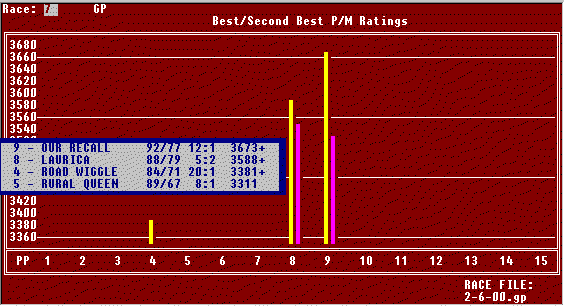
The Handicap
Speaking of risk, this contest had far more than usual. And one might argue it shouldn't have been played. However, the odds made it worth considering - and here is the reasoning.
This, the 2nd race at Gulfstream on Feb 6, was a 6 furlong Maiden Special Weight for 3YO fillies. When reviewing this contest, recall the earlier example with Nealski's Bro. Note that this race had only two experienced contenders in a field of NINE with FIVE first time starters - which usually means the race is "passed" automatically.
But, as a general rule, first-timers (especially two and three-year-olds) normally do not win first out when the distance is 6 furlongs or more UNLESS it is in great form and well-placed by a trainer who has mastered the Condition Book. Even the great Secretariat and Dr. Fager began their careers at under six panels. A great deal depends on the horse's age and the preparation for the race. In fact, 6 furlong races for first-timers under four years old could represent a health risk. It takes time for them to be ready.
When handicapping first-timers in a maiden race (MSW or Mdn), there are four steps in the analysis (and in this order):
1. Consider the breeding - especially the sire
and the sire of the dam;
2. Review the workouts (recent 5 furlong works are a MUST);
3. Look at the trainer and his record handling first-time starters;
4. Look at the ability of the jockey.
In this contest, the "one to beat" is #8, Laurica. Of the two experienced contenders, #8 Laurica appeared to be the likely winner having run all MSW dirt sprints, plus good workouts. Our Recall (#9) was a "Former Green Baby" (read the book, " Handicap! Finding the Key Horse"). The numbers appearing on the sheets were all run when the filly was two years old. So, good improvement could be expected, even though the figures were 5 1/2 furlong turf sprints at Evangeline Downs in Louisiana. The last time she ran (October) was a 6 furlong dirt sprint at Keeneland and the workouts suggested she would be ready.
Of the first time starters, there were only two to fear: #3 Seattle Flower of Seattle Slew lineage, with Sellers aboard, and some good workouts suggesting ability and speed. The other was #7 Lucky Dynamo by Broad Brush and Mr. Prospector lineage. With Mike Smith aboard and good workouts, Lucky Dynamo also appeared to be a threat, even though Seattle Flower was the only first-timer getting action on the board.
Once the race was underway, it was clear that Seattle Flower was the one "expected" to win. She was the favorite at post time and went right to the front to challenge the primary pacesetter, Laurica. Seattle Flower found it difficult to maintain her short lead at the second call and fell. Laurica won by 4 and Our Recall finished another 4 lengths ahead of the others. Rural Queen, another with some experience, moved up to third and the trifecta paid a terrific $712.20.
![]()
![]()